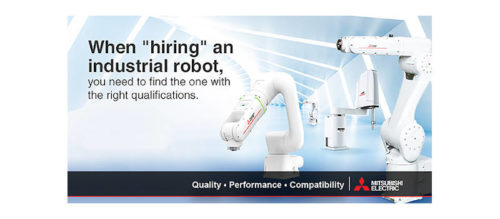Collaborative robot market growing along with their popularity
The rise of collaborative robots is expected to continue as manufacturers and people become more comfortable with their presence in everyday situations and the market reflects that.
Automation is helping to solve challenges for a wide range of industries and collaborative robots are leading the charge. An Interact Analysis report states collaborative robots will account for approximately 30% of the total robot market by 2027.
Is your business contemplating an investment in collaborative robots? Though it’s true that collaborative robots are new, they’re already making a huge impact. Consider some of the reasons why you should pay attention to collaborative robots.
The report forecasts collaborative robot revenues will go from $550 million in 2018 to $5.6 billion by 2027. And by 2023, the most popular collaborative robots will be the segment that includes industrial robots. Collaborative robot growth is expected in other fields such as life sciences and hospitality.
Collaborative robots aren’t just being used in manufacturing facilities. For example, they’ve begun to revolutionize logistics. Collaborative robots are being used to move products in pick-and-place applications and to transport materials around warehouses and medical facilities. Equipped with GPS and LiDAR, collaborative robots will save humans a lot of time by moving stuff around humans normally would move.
People are even meeting collaborative robots in their day-to-day lives. Collaborative robots are delivering packages and meals to hungry consumers. Shoppers are meeting collaborative robots working at grocery stores. As consumers get more comfortable with collaborative robots, they’ll be used for reception, preparing meals, and even medical exams.
Why collaborative robots are becoming popular
Not only can collaborative robots help to improve efficiency in manufacturing, logistics, and life sciences, but small and medium businesses are thrilled with how easy it is to set them up. They’re also extremely flexible. Local companies that don’t have large budgets for automation implementation can easily deploy collaborative robots to do real, meaningful work in multiple departments.
These simple, cost-effective, entry-level robots are also making them more accessible on a global level. Manufacturers in countries where human labor is relatively inexpensive have historically seen less of a need to develop their workforce. But with low-cost industrial robots, these manufacturers will implement automation solutions and train workers on new skills.
Labor shortages plague many industries from agriculture to aerospace. Experts only expect the labor crisis to get worse throughout the next decade. Collaborative robots and other industrial robots will help to fill the gap left by aging workers. Businesses that invest in collaborative robots will improve job satisfaction, create an engaged workforce, and draw more talent.
This article originally appeared on the Robotics Online Blog. Robotic Industries Association (RIA) is a part of the Association for Advancing Automation (A3), a CFE Media content partner.
Original content can be found at www.robotics.org.
Do you have experience and expertise with the topics mentioned in this content? You should consider contributing to our CFE Media editorial team and getting the recognition you and your company deserve. Click here to start this process.



